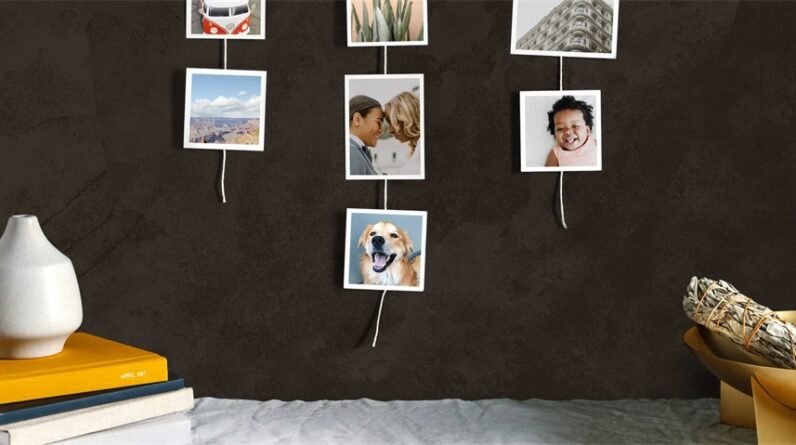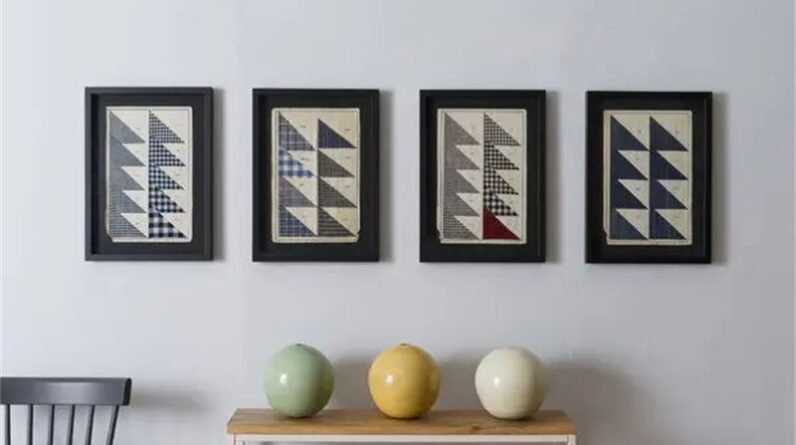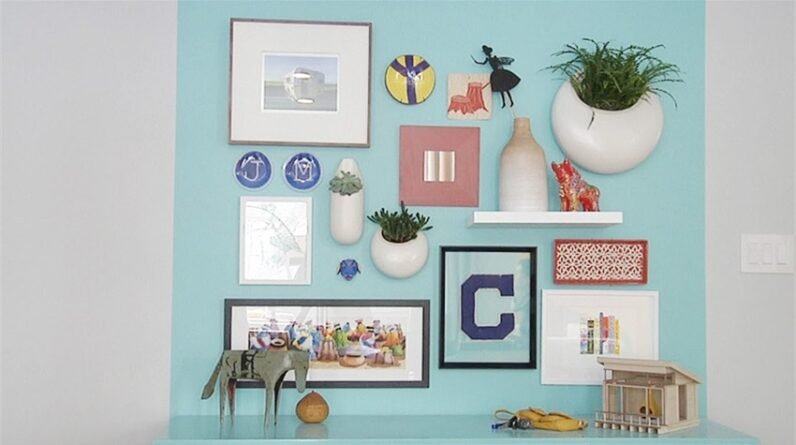
You can hang posters without frames using a variety of easy and damage-free methods. Adhesive strips, thumbtacks, and 3M Command strips are great for a quick and easy hang. For a more temporary display, try using double-sided tape or staples. If you want to add a personal touch, consider making a DIY poster hanger or using poster hanging clips. You can even get creative with a poster collage or use strong magnets for a hassle-free hang. With so many options available, you'll be able to find the perfect method for your space and style, and discover even more ways to get creative.
Key Takeaways
- Use adhesive solutions like adhesive strips, 3M Command Strips, or double-sided tape for smooth surfaces and lightweight posters.
- Choose mechanical fasteners like thumbtacks or staples for heavier posters or textured surfaces, but use with caution to avoid damage.
- Opt for hooks and clips, such as removable wall hooks or poster hanging clips, for easy adjustments and repositioning without damage.
- Consider alternative methods like strong magnets for metal surfaces or DIY poster hangers for a custom solution.
- Create a visually appealing display by arranging multiple posters in a collage, balancing sizes and orientations for a cohesive layout.
Using Adhesive Strips Effectively

To use adhesive strips effectively, you'll need to choose the right type for your poster's weight and the surface you're hanging it on. If you're hanging a lightweight poster on a smooth surface like a wall or door, you can use basic adhesive strips. However, if you're hanging a heavier poster or hanging it on a textured surface like a concrete wall, you'll need to use stronger strips.
You'll also need to follow the manufacturer's instructions for applying the strips to both the poster and the surface. Typically, you'll need to clean the surface first, then apply the strips to the poster and press it firmly onto the surface.
Make sure the strips are aligned with the edges of the poster to avoid wrinkles or bubbles. By choosing the right type of adhesive strips and following the instructions, you can hang your poster securely without damaging it or the surface it's on.
Hanging Posters With Thumbtacks

Hanging posters with thumbtacks requires careful planning to avoid damaging the poster or the surface it's being hung on.
You'll want to start by choosing the right type of thumbtacks. Opt for ones with a flat, rounded head and a short pin to minimize the risk of tearing the poster.
Next, decide where you want to hang your poster, taking into account the location of any studs or uneven spots on the wall.
Once you've selected your spot, gently press the thumbtack into the wall at a 45-degree angle, making sure not to push too hard and damage the surrounding area.
Then, carefully lift the poster and hang it on the tack, adjusting as needed to get it straight.
To add extra support, you can use multiple thumbtacks spaced evenly apart. Just be sure not to overdo it, as too many tacks can lead to a cluttered look.
Poster Hanging With 3M Command

With 3M Command strips, you can hang your poster without damaging the wall or leaving residue when it's time to remove it. You'll love how easy it is to use these strips, and you can find them in various weight limits, so you can choose the right one for your poster's size and weight.
To hang your poster with 3M Command strips, follow these simple steps:
- Choose the right strip: Select a strip that can hold the weight of your poster. You can find this information on the packaging or on the 3M website.
- Clean the wall: Make sure the wall is clean and dry before applying the strip. This will guarantee it adheres properly and doesn't fall off.
- Apply the strip: Remove the backing and press the strip firmly onto the wall. Hold it there for a few seconds to make sure it's secure.
Utilizing Double Sided Tape

While 3M Command strips are a reliable option, another quick and easy way to hang a poster without a frame is by using double-sided tape, which also comes off without damaging the wall.
You'll find this method especially useful for lightweight posters and smooth surfaces like glass, metal, or painted walls. To get started, choose a high-quality double-sided tape that's designed for hanging items, as it will have a stronger adhesive.
Before applying the tape, verify the wall and the back of the poster are clean and dry. Cut a small piece of tape and press it firmly onto the back of the poster, then remove the backing and press the poster onto the wall. Hold the poster in place for a few seconds to guarantee the tape adheres properly.
If you need to remove the poster, you can do so without worrying about damaging the wall or leaving residue. This method is also great for temporary or seasonal decorations, as it's easy to put up and take down without making a mess.
Poster Hanging With Staples

To hang a poster without a frame using staples, you'll want to start by selecting a staple gun and staples that are suitable for the type of surface you're working with. This is essential to avoid damaging the wall or the poster. Make certain you've got the right staples for the job.
Before you start stapling, take a moment to plan out the poster's placement. Here are 3 things to keep in mind:
- Choose the right spot: Decide where you want to hang the poster, taking into account the surrounding decor and the height at which you want the poster to be displayed.
- Measure the poster: Measure the width of the poster to guarantee you're placing the staples at the right distance from each other.
- Mark the spot: Lightly mark the spot where you want to place the first staple, using a pencil or a marker.
Once you've got your plan in place, you can start stapling. Hold the staple gun at a 45-degree angle and staple the poster to the wall, working your way from one corner to the other. Be careful not to apply too much pressure, which can cause the staple to go in too deep.
Using Removable Wall Hooks

When opting for removable wall hooks to hang your poster, you'll need to choose a hook that's specifically designed for the weight and size of your poster.
Consider the type of surface you're working with, too – some hooks work better on drywall, while others are designed for plaster or brick. Make certain to read the packaging carefully to make sure you're getting the right hook for the job.
Once you've selected your hook, it's time to attach it to the wall. Follow the manufacturer's instructions for application and removal – some hooks may require you to clean the surface first or wait a certain amount of time before adding weight.
Gently press the hook onto the wall, making sure it's level and secure. Then, simply hang your poster from the hook, adjusting as needed to get it straight.
Removable wall hooks are a great option if you're renting or like to switch up your decor often, as they won't damage the paint or wallpaper.
Hanging Posters With Magnets

For metal doors, fridges, or file cabinets, you can use strong magnets to hang your posters without damaging the surface or leaving residue. You'll want to choose magnets that are specifically designed for holding heavy paper or light cardboard, as regular refrigerator magnets mightn't be strong enough.
Make certain to clean the surface before applying the magnet to guarantee a strong hold.
Here are three tips to keep in mind when hanging posters with magnets:
- Use multiple magnets for larger posters: If your poster is particularly large or heavy, use multiple magnets spaced evenly apart to distribute the weight and prevent the poster from sagging or falling.
- Test the magnet strength: Before leaving the poster unattended, test the magnet's strength by gently tugging on the poster to verify it won't fall off.
- Avoid overlapping magnets: To prevent the magnets from demagnetizing each other, avoid overlapping them or placing them too close together.
Creating a Poster Collage
With multiple posters and a blank wall, you can create a visually striking collage that showcases your personality and interests. You'll have a blast arranging and rearranging the posters until you find the perfect combination.
Start by laying out all your posters on the floor or a large table. This will give you a sense of the colors, textures, and themes you're working with. Begin grouping posters that complement each other, either by theme, color, or style.
As you arrange the posters, consider the size and shape of each one. Balance large posters with smaller ones, and mix up the orientations to keep things interesting. Don't be afraid to experiment and move things around until you land on a layout that feels cohesive and visually appealing.
Once you're happy with your arrangement, take a step back and admire your handiwork. With a little creativity, your poster collage will become the focal point of the room, adding a touch of personality and whimsy to your space.
Using Poster Hanging Clips

Attach poster hanging clips to the top of each poster, making certain they're spaced evenly apart to distribute the weight and prevent the poster from sagging or ripping. This simple step will help you create a professional-looking poster display.
You can use a level to guarantee the clips are straight and even. Now you'll be able to hang your posters securely on the wall without damaging them.
Here are three reasons why poster hanging clips are a great choice:
- Easy installation: Poster hanging clips are easy to install and don't require any specialized tools or expertise.
- Flexibility: Poster hanging clips come in different sizes and can be used to hang various types of posters, from small prints to large artwork.
- Damage-free: Poster hanging clips are designed to attach to the poster without causing any damage, making them a perfect solution for hanging valuable or rare prints.
Once you've attached the poster hanging clips, you can hang your posters on the wall, adjusting their position as needed to create a visually pleasing display.
Making a DIY Poster Hanger

If poster hanging clips aren't your style, you can create a custom solution by making a DIY poster hanger that adds a personal touch to your poster display.
You'll need a few simple materials: a wooden or plastic rod, two metal or plastic end caps, a piece of twine or string, and a few screws or nails. Cut the rod to the desired length, leaving a bit of extra room on either side of the poster for hanging.
Next, attach the end caps to the ends of the rod using screws or nails. This will prevent the poster from slipping off the rod. Then, tie the twine or string around the top of the rod, leaving enough slack to hang the poster at your desired height.
Finally, attach the poster to the rod using a small clip or a dab of glue. With your DIY hanger complete, you can hang your poster on a nail or screw, adjusting the twine or string as needed to get the perfect placement.
This custom solution lets you show off your unique style and add a personal touch to your poster display.
Frequently Asked Questions
What Types of Walls Are Not Suitable for Hanging Posters Without Frames?
You'll struggle to hang posters on textured, popcorn, or plaster walls without frames, as the adhesive or tape won't stick well. You'll also want to avoid hanging on freshly painted or wallpapered walls to prevent damage.
Can I Hang Posters Without Frames on Textured or Uneven Walls?
You can hang posters on textured or uneven walls, but you'll need specialized adhesive strips or putty that can grip the surface securely; otherwise, they might not stick well or fall off easily.
How Do I Prevent Poster Edges From Curling or Bending?
You can prevent poster edges from curling or bending by applying a thin layer of adhesive, like double-sided tape or spray adhesive, to the back of the poster, making sure to cover the entire edge surface evenly.
What Is the Maximum Weight Limit for Hanging Posters Without Frames?
You're wondering about the maximum weight limit for hanging posters without frames? You should check the weight limit of the adhesive or hanging method you're using, as it typically ranges from 1-5 pounds, depending on the product.
Can I Reuse Adhesive Strips or Double-Sided Tape to Hang Posters?
You can't reuse adhesive strips or double-sided tape to hang posters because the adhesive loses its strength after removal, and reusing it can lead to falling posters; instead, use new strips or tape for a secure hold.
Conclusion
You've got plenty of options for hanging posters without frames. You can use adhesive strips, thumbtacks, 3M Command strips, double-sided tape, staples, magnets, or poster hanging clips.
Get creative and make a collage or a DIY hanger. Whatever method you choose, make sure it's sturdy and won't damage your walls or the poster.
Experiment with different techniques to find what works best for you and your space.







